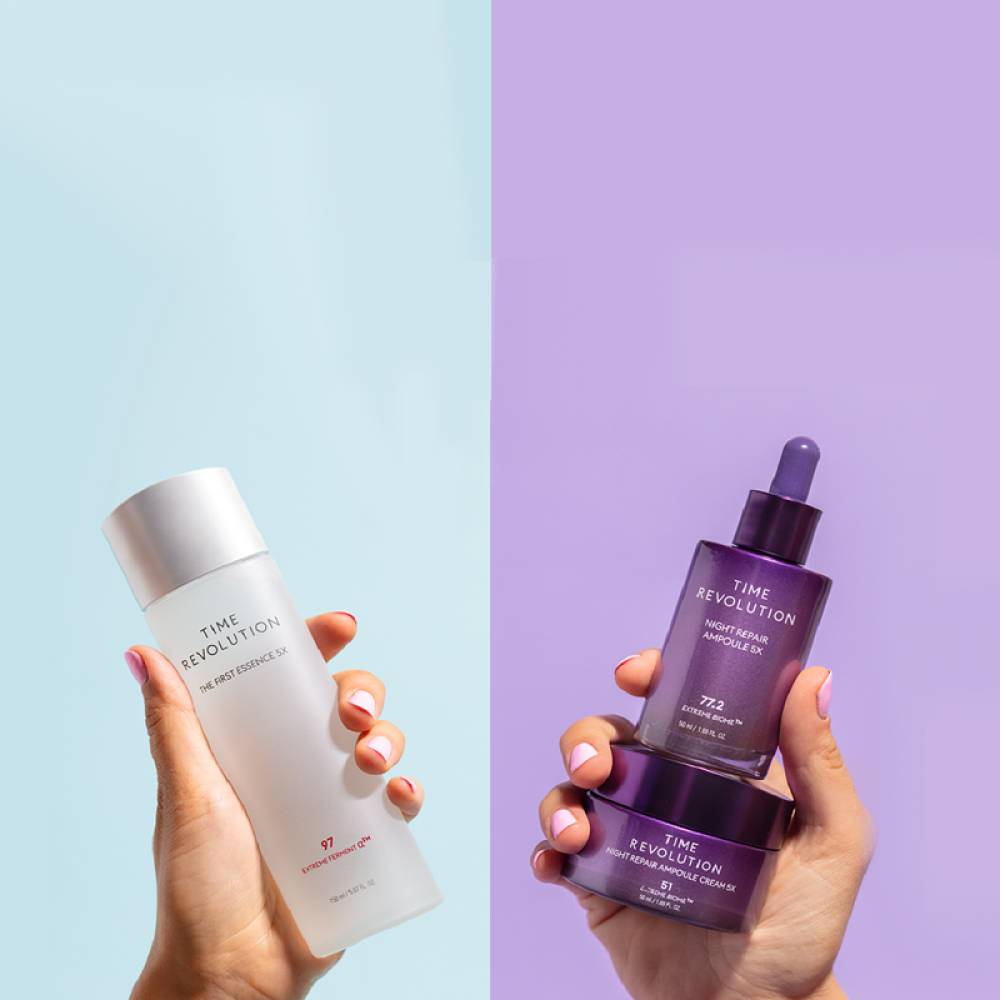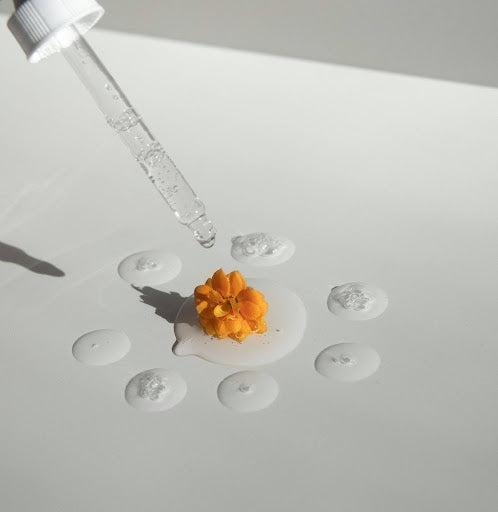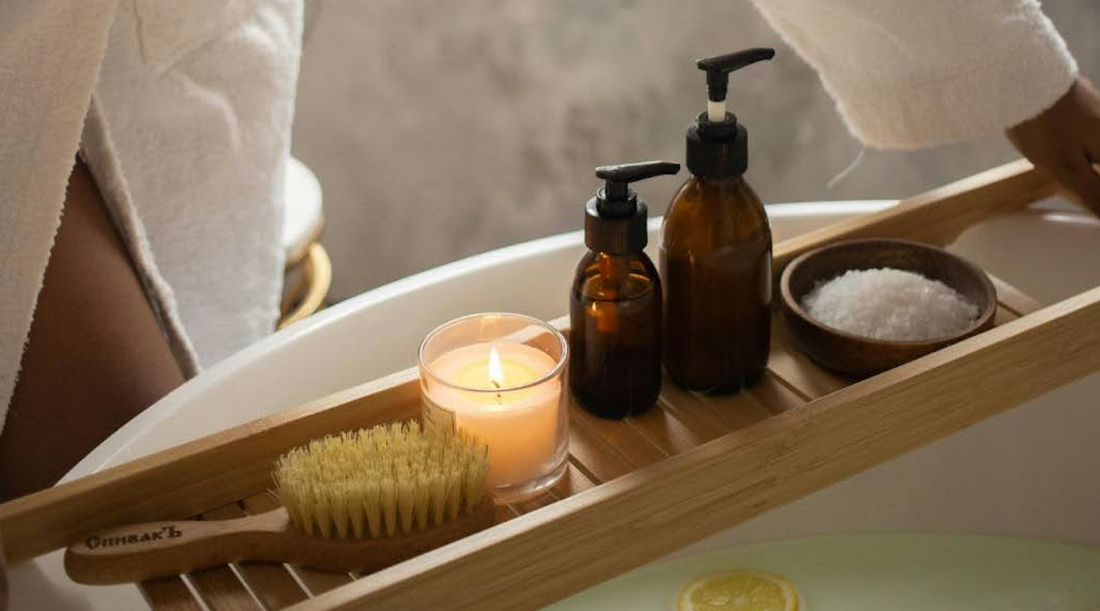In recent years, the Korean skincare routine has taken the beauty world by storm. With its emphasis on thorough cleansing, hydration, and protection, this meticulous skincare regimen has gained a loyal following. However, for beginners, deciphering the order of the steps can be a bit overwhelming. Fear not! In this article, we will guide you through the essential components and steps of the Korean skincare routine, helping you master the order and adapt it to your skin type.
Understanding the Basics of Korean Skincare
Before diving into the specifics, it's important to grasp the philosophy behind Korean skincare. Korean beauty embraces the idea of achieving healthy, radiant skin through a consistent and personalized routine. It is not just about quick fixes, but rather a long-term commitment to nurturing your skin.
One of the fundamental principles of Korean skincare is the emphasis on gentle and natural ingredients. Korean beauty products often contain botanical extracts, such as green tea, ginseng, and rice water, known for their nourishing and soothing properties. These natural ingredients are carefully selected to provide maximum benefits to the skin without irritating, making them suitable for even the most sensitive skin types.
The Philosophy Behind Korean Skincare
Central to Korean skincare is the belief that prevention is key. By addressing the root causes of skin issues and maintaining the skin's health, Koreans strive to prevent problems before they arise. This proactive approach sets the foundation for the comprehensive routine that follows.
Another core tenet of Korean skincare is the concept of "skin first." This philosophy prioritizes skincare as an essential part of self-care and overall well-being. By investing time and effort into caring for their skin, Koreans view skincare not just as a beauty regimen, but as a form of self-respect and self-love.
Key Components of a Korean Skincare Routine
A typical Korean skincare routine consists of several steps that work together to achieve optimal skin health. These steps include cleansing, toning, essence and serums, masks, eye cream, moisturizing, and sun protection. Each step plays a crucial role in nourishing and protecting the skin, ensuring it stays hydrated, supple, and youthful.
Moreover, Korean skincare rituals often incorporate facial massage techniques to promote blood circulation and lymphatic drainage, enhancing the absorption of skincare products and giving the skin a healthy glow. These gentle massage movements not only relax facial muscles but also contribute to a more sculpted and defined facial structure over time.
Step-by-Step Guide to the Korean Skincare Routine
Cleansing: The Double Cleanse Method
The Korean skincare routine begins with a thorough cleanse to remove makeup, sebum, and impurities that have accumulated on the skin throughout the day. The double cleanse method involves using an oil-based cleanser first, followed by a water-based cleanser. This two-step process ensures a deep cleanse without stripping the skin of its natural moisture.
When it comes to the oil-based cleanser, you have a variety of options to choose from. Some popular choices include cleansing balms, cleansing oils, and micellar waters. These products effectively dissolve makeup and sunscreen, leaving your skin feeling clean and refreshed. Massage the oil-based cleanser onto dry skin, focusing on areas with heavy makeup or stubborn impurities. Then, rinse it off with lukewarm water.
Toning: Preparing Your Skin
After cleansing, it's time to tone the skin. Toners help balance the skin's pH levels, remove any remaining traces of dirt or cleanser, and prepare the skin for optimal absorption of subsequent skincare products. Choose a toner that suits your skin type and gently pat it on your skin.
When selecting a toner, consider the specific needs of your skin. If you have dry skin, opt for a hydrating toner that contains ingredients like hyaluronic acid or glycerin. For oily or acne-prone skin, look for toners with ingredients like salicylic acid or tea tree oil to help control excess oil and minimize breakouts. No matter your skin type, a good toner will leave your skin feeling refreshed and ready for the next steps in your skincare routine.
Essence and Serums: The Heart of Korean Skincare
The next step involves applying essence and serums. These concentrated formulations are packed with active ingredients that target specific skin concerns such as hydration, brightening, or anti-aging. Essences, usually lightweight and watery, are applied before serums to ensure maximum absorption. Serums, with their thicker consistency, deliver potent ingredients deeper into the skin.
When it comes to choosing essences and serums, the options are endless. Look for products that address your specific skin concerns. For example, if you're looking to hydrate and plump your skin, consider an essence or serum containing hyaluronic acid. If you're concerned about dark spots or uneven skin tone, look for products with ingredients like vitamin C or niacinamide. Incorporating essences and serums into your skincare routine can help you achieve a more radiant and youthful complexion.
Masks: The Extra Care Step
Masks are an integral part of the Korean skincare routine. They provide an extra boost of hydration, brightening, or soothing, depending on the mask type. Sheet masks, in particular, are popular as they allow for intensive and targeted treatment. Apply a mask after essence and serums, leave it on for the recommended time, and enjoy a relaxing self-care moment.
There are various types of masks to choose from, each offering unique benefits. Sheet masks are easy to use and come in a wide range of formulations, from moisturizing to firming. Clay masks are great for deep cleansing and drawing out impurities. Sleeping masks are applied before bed and left on overnight to provide intense hydration and nourishment. Whichever mask you choose, incorporating this extra care step into your routine will leave your skin feeling pampered and rejuvenated.
Eye Cream: Focusing on Delicate Areas
The delicate skin around the eyes requires special attention. Eye creams, formulated to address concerns such as dark circles, puffiness, and fine lines, should be gently patted onto the skin using your ring finger. This step helps nourish and protect this sensitive area.
When selecting an eye cream, look for ingredients like caffeine or vitamin K to help reduce puffiness and dark circles. Peptides and retinol can help minimize the appearance of fine lines and wrinkles. Remember to be gentle when applying eye cream, as the skin around the eyes is delicate and prone to damage. With consistent use, an eye cream can make a noticeable difference in the appearance of your under-eye area.
Moisturizing: Locking in Hydration
Keeping the skin moisturized is crucial for a healthy complexion. Choose a moisturizer suitable for your skin type and apply it to your face and neck. Massage it in gentle, upward motions to promote circulation and absorption. Moisturizers help maintain the skin's moisture barrier, preventing dryness and promoting a plump, supple appearance.
When selecting a moisturizer, consider your skin type and any specific concerns you may have. If you have dry skin, opt for a richer, more emollient moisturizer. For oily or acne-prone skin, look for lightweight, oil-free options. If you're concerned about aging, consider a moisturizer with added anti-aging ingredients like peptides or antioxidants. Applying moisturizer is the final step in your skincare routine, sealing in all the previous products and leaving your skin feeling soft, smooth, and nourished.
Sun Protection: The Final and Crucial Step
No skincare routine is complete without sun protection. Applying sunscreen with at least SPF 30 is essential to shield the skin from harmful UV rays. Choose a lightweight, broad-spectrum sunscreen suitable for daily use. Gently pat it onto your skin as the final step of your morning routine, even on cloudy or rainy days.
Sunscreen is your best defense against premature aging, sunburn, and skin damage caused by UV radiation. Look for sunscreens that offer broad-spectrum protection, meaning they shield against both UVA and UVB rays. Consider sunscreens with additional benefits, such as oil control or hydration, to suit your skin's needs. Remember to reapply sunscreen every two hours, especially if you're spending time outdoors. By making sun protection a non-negotiable step in your skincare routine, you're taking a proactive approach to maintaining healthy and youthful-looking skin.
Adapting the Korean Skincare Routine to Your Skin Type
When it comes to skincare, understanding your skin type is crucial to tailor your routine effectively. Each skin type has its own unique needs and challenges, and knowing how to address them can make a significant difference in the health and appearance of your skin.
Considerations for Dry Skin
If you have dry skin, you'll want to focus on products that provide intense hydration and nourishment. Look for moisturizers with richer textures that contain ingredients like hyaluronic acid or ceramides to help restore and maintain the skin's moisture barrier. In addition to your regular skincare routine, consider incorporating a hydrating sheet mask into your regimen several times a week to give your skin an extra boost of hydration.
Tips for Oily Skin
For those with oily skin, the key is to use lighter, oil-free products that won't clog pores or exacerbate shine. Opt for water-based cleansers that can effectively remove excess oil and impurities without stripping the skin. Lightweight, gel-based moisturizers are ideal for oily skin types, as they provide hydration without adding extra oil. Including toners with pore-minimizing or mattifying properties in your routine can help control oil production and keep your skin looking fresh throughout the day.
Suggestions for Combination Skin
Combination skin can be tricky to manage since it consists of both dry and oily areas on the face. When caring for combination skin, it's important to strike a balance between addressing dryness and controlling oiliness. Opt for gentle cleansers that do not overly dry out the skin, and choose lightweight moisturizers that hydrate without feeling heavy or greasy. To target specific concerns in different areas of the face, consider using different types of serums or treatments tailored to each area's needs.
Advice for Sensitive Skin
Individuals with sensitive skin need to take extra precautions when selecting skincare products to avoid potential irritants or allergens. Look for products labeled as hypoallergenic or specifically formulated for sensitive skin to minimize the risk of adverse reactions. Before incorporating a new product into your routine, always perform a patch test on a small area of your skin to check for any sensitivities. Avoid products containing harsh or abrasive ingredients, and opt for fragrance-free options whenever possible to reduce the likelihood of irritation.
Conclusion
Now that you understand the order and purpose of each step in the Korean skincare routine, you are ready to embark on your journey toward glowing, healthy skin. Remember to be consistent and patient as results may take time. Customize the routine to suit your skin type and feel free to experiment with different products to find what works best for you. With dedication and the right products, you'll soon be reaping the rewards of a mastered Korean skincare routine.








